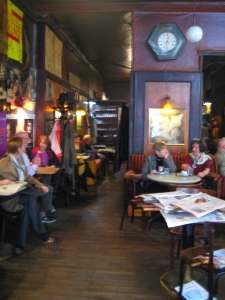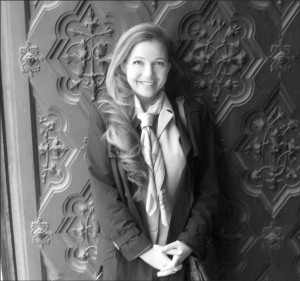What is the Anti-Subrogation Rule?
In its narrowest form, the anti-subrogation rule is a legal principle that an insurance carrier has no right of subrogation against its own insured. In other words, an insurance carrier cannot sue its own insured in a subrogated action to recover payments made for a risk that is covered by the insurance policy. In the United States, however, the bar against suing one’s own insured has been extended by some courts to preclude subrogated actions beyond situations in which a single insurance policy is involved, to encompass multiple policies. Consider a situation where a subrogating insurer has, by happenstance, issued a separate liability policy to a defendant in the action. The argument for precluding subrogation in such cases is that the insurer is “suing its own insured”, even though it is clear that the suit is not against the same insured to whom it made the payments giving rise to the insurer’s subrogation rights.
Does the Anti-Subrogation Rule Exist in Canada?
To date, there is one Canadian case that has applied the anti-subrogation rule – Lacombe v. Don Phillips Heating Ltd. [“Lacombe”], a 2005 Ontario decision of Master Beaudoin. In Lacombe, the plaintiffs, Mr. and Mrs. Lacombe, claimed for damages arising from an oil spill at their residence. Most of the loss was borne by Lacombe’s insurer, Aviva, which had paid for the costs of cleanup under a homeowner’s policy of insurance. Together, the Lacombes and Aviva sought recovery of insured and uninsured losses totalling $300,000.
The action was brought against a contractor for whom Aviva had issued a liability insurance policy that responded to the subrogated claim. Aviva brought a motion on behalf of the contractor to strike the subrogated claim before a Master, arguing that the anti-subrogation rule should be applied in Canada. Importantly, Aviva’s subrogation counsel did not challenge the motion – the Court was presented with a one-sided argument.
In the result, the portion of the action advanced on behalf of Aviva alone was dismissed, despite there being no real exposure to the insured contractor. Master Beaudoin adopted the reasoning of Home Ins. Co. v. Pinski Bros, Inc. 500 P.2d 945 (Mont. Sup. Ct. 1972) [“Pinski”], a decision of the Montana Supreme Court, which held that permitting an insurer to sue its own insured for a liability covered by the insurance policy would violate basic principles of equity and public policy by:
- allowing the insurer to expend premiums collected from its insured to secure a judgment against the same insured on a risk insured against;
- giving judicial sanction to the breach of the insurance policy by the insurer;
- permitting the insurer to secure information from its insured under the guise of policy provisions available for later use in the insurer’s subrogation action against its own insured, allowing the insurer to take advantage of its conduct and conflict of interest with its insured; and
- constituting judicial approval of a breach of the insured’s relationship with its own insured.
As a Master’s decision, however, Lancombe is not binding on Ontario judges, nor has the decision been followed by another court. The one-sided nature of the arguments presented to the Court provides a good basis for challenging the persuasiveness of the Master’s reasoning. Additionally, there are very good reasons to argue that the anti-subrogation rule, in its broader form, should not form part of Canadian insurance law:
1. The anti-subrogation doctrine misapplies the equitable principles of subrogation. Where a defendant is coincidentally covered under a policy issued by the same carrier as the plaintiff, the plaintiff is not “suing itself”. The carrier’s rights as a subrogee under a property policy are wholly separate and distinct from the duty owed to an entirely different party under a separate contract of liability. The subrogating insurer is not simply ‘bringing an action against itself for damages’ when it happens to provide liability insurance to a defendant under a separate and distinct policy.
2. The anti-subrogation rule is contrary to established goals of tort law and principles underlying Ontario’s Insurance Act. Subrogation is based on considerations of equity and good conscience. Subrogation is viewed as serving the ends of justice by placing economic responsibility for injuries upon parties who are at fault for causing a loss. The goal of tort law to place the burden of payment for negligently causing harm does not disappear due to the introduction of insurance in the modern world. Insurance is not, in and of itself, a risk transfer mechanism between parties unless they specifically agree to such an intent. This fundamental principle should not change due to the fortuity that the same insurer writes a property policy for one insured, a liability policy for a separate company, and the one company negligently causes harm to the other. The anti-subrogation doctrine, even in its most restrictive form, would result in what has been correctly characterized by some U.S. courts as an “unbargained for, unpaid for, windfall” because a risk not otherwise insured against is, in effect, due to the “fortuitous fact” that liability is asserted against the insured by a party that also happens to be covered by the same carrier”.
3. Those who incur higher losses should pay higher premiums. Premiums for such insurance are determined, in large part, by the loss history of an insured. An individual with many losses will, and should, pay more than those who have few or none. For example, section 412(6) of Ontario’s Insurance Act provides that a system for calculating premiums must be just and reasonable, be reasonably predictive of risk and distinguish fairly between risks. Underwriters calculate the total anticipated losses for policy periods in determining the premiums to charge insureds for each policy period. The anti-subrogation rule would have the effect that the victim, rather than the tortfeasor, would bear the costs of higher insurance premiums and the possibility of becoming a less insurable entity.
4. The anti-subrogation rule presumes bad faith conduct on the part of insurers. The concerns expressed in Pinski, adopted by Master Beaudoin, presume that insurers will breach their duties of good faith to their insured with respect to the provision of insurance under the policies in question. It anticipates that insurers will act in bad faith and then seeks to impose a ‘blanket’ remedy without regard to the circumstances of a given case. The anti-subrogation rule therefore “puts the cart before the horse”. There are other, more appropriate, remedies available to deal with any bad faith conduct on the part of an insurer. For example, the concerns expressed in Pinksi and Lancombe with respect to potential conflicts of interest and the sharing of an insured’s confidential information are not insurmountable. “Chinese walls” are a favoured technique for dealing with conflicts of interest that arise from carrying on business by large financial institutions as well as many legal and accounting firms. Chinese walls are designed to insulate sensitive documentation from the wider firm in order to prevent conflicts of interest by restricting the flow of information between different departments of the same organization.
5. The adoption of the anti-subrogation doctrine in Canada represents a marked departure from common law principles. The anti-subrogation doctrine is a recent product of American common law that is not recognized in Commonwealth countries. There is no such bar in the United Kingdom.
6. Insurers have valid reasons for pursing such claims. As recently noted by Campbell J., a duty of good faith, and in some circumstances fiduciary duty, does exist between primary insurers, excess insurers and reinsurers. This may arguably include an obligation on the part of insurers to subrogate losses for the benefit of the insurance group. Additionally, policies of reinsurance may contractually oblige primary insurers to pursue subrogated claims for the benefit of the re-insurers.
7. The anti-subrogation rule is open to exploitation by savvy defendants. As noted by the Court in Fashion Tanning, “a potential defendant could contrive to avoid being held accountable for the full measure of its product liability by merely securing small liability policies from a host of carriers, thereby frustrating any subrogation action brought against it by any of those insurers”.
8. A variety of factual patterns suggest that the anti-subrogation rule expressed in Lancombe should rejected. Consider, for example:
- Insurance carriers with similar names are not “the same”. Some insurers are separate companies with the same parent or have related names but are really operated as separate companies. To what extent are related companies considered to be the “same entity” for the purposes of this rule?
- What if ABC Insurance Company pays $500,001 to its insured plaintiff, but also happens to write an excess policy covering the defendant for liability limits above $500,000? Is ABC Insurance Company completely barred even though most of its claim falls below the excess limits?
- What if ABC Insurance Company writes the first $10,000 of coverage to a tortfeasor who has adequate excess or umbrella coverage with another liability carrier? Can ABC Insurance Company collect for an amount above the first $10,000 layer of coverage?
Conclusion
Lacombe is an Ontario and the first Canadian case to consider the anti-subrogation doctrine. Although it is a 2005 decision, it has not been followed in Ontario or applied in other provinces. This effort to import the anti-subrogation rule in Canada is at the expense of historically sound tort and insurance law risk allocation schemes. As such, the reasoning underlying this decision is ripe for challenge in Canada. We will see what the future brings.
Filed under: Insurance, Subrogation | Tagged: anti-subrogation, antisubrogation | Leave a comment »


























































